
Visible light — the rainbow of colors that human eyes can detect — is only one kind of light. The electromagnetic spectrum ranges from short, highly energetic gamma rays to long, low-energy radio waves. In order to get a full picture of a cosmic object, researchers need telescopes that can investigate it across this spectrum.
R Quarii
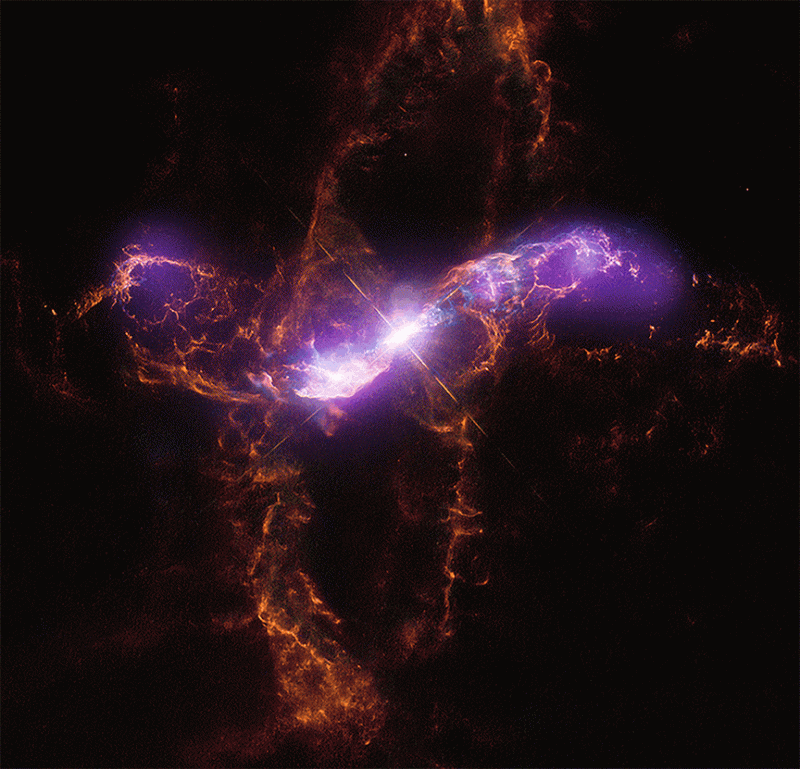
In this system, a stellar remnant called a white dwarf is slowly devouring its companion, pulling material from the larger red giant star as they orbit one another. Once enough material accumulates onto the white dwarf, it triggers an explosion. Known as a nova, these outbursts are less powerful than a supernova and don’t destroy their progenitor, so a white dwarf can experience multiple novae over its lifetime.
Using X-ray data from the Chandra X-ray Observatory (purple) and optical light taken with the Hubble Space Telescope, astronomers can see material from past novae around the white dwarf (red and blue). A jet of material (purple) is striking these outbursts, creating shock waves.
Cassiopeia A
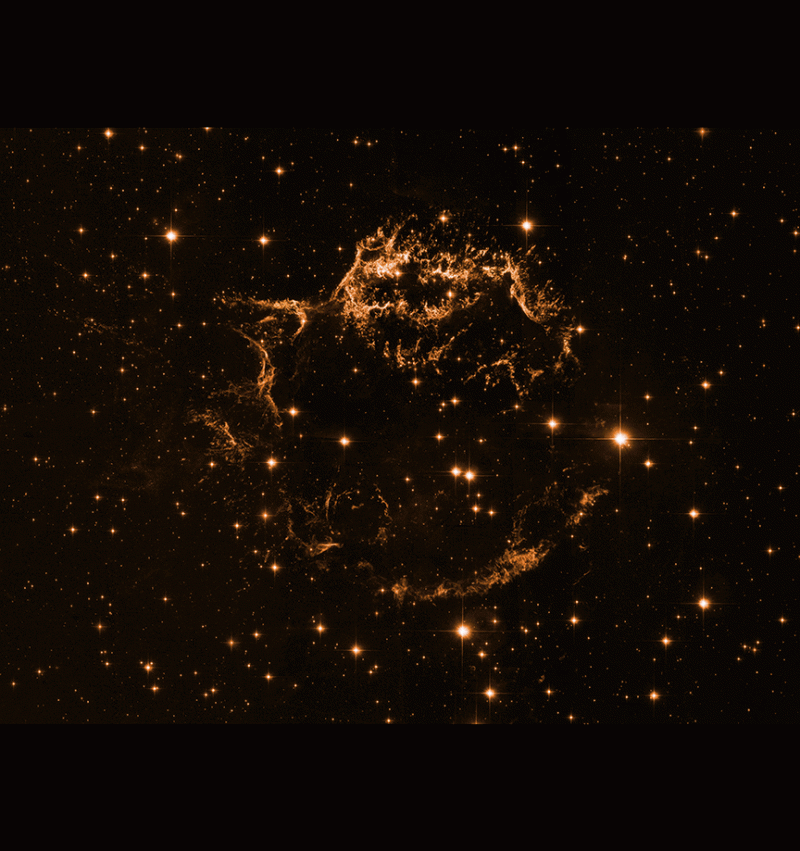
Looking at this supernova remnant in both X-rays and radio waves allows scientists to peel back the layers of gas and dust that would otherwise eclipse it from view. With Chandra, researchers can tell what elements the now-dead star released when it exploded: silicon (red), sulfur (yellow), calcium (green), and iron (light purple). A layer of radio waves from the National Science Foundation's Karl Jansky Very Large Array (dark purple, blue, and white) and optical data from Hubble (orange) reveals even greater detail hidden within this famous supernova.
Guitar Nebula
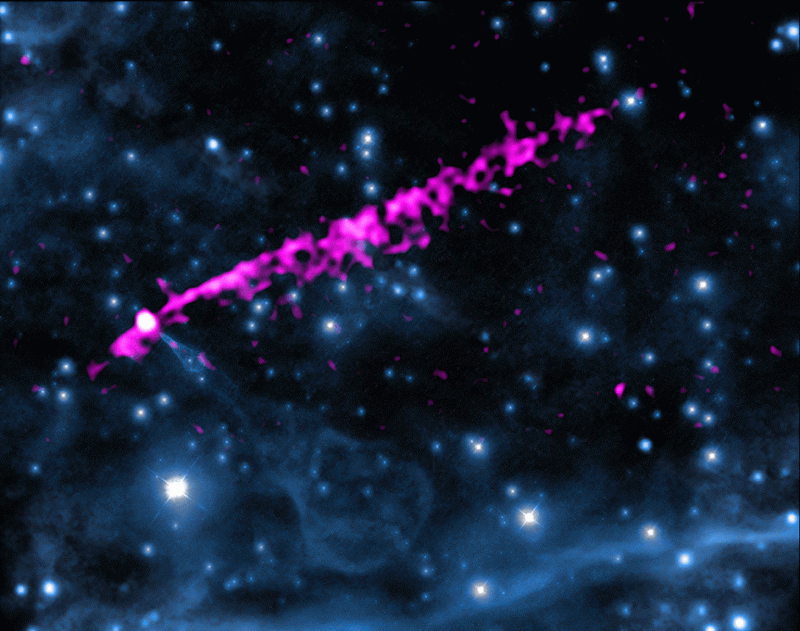
Pulsars are strange objects. A breed of neutron star — the dense remains of a giant star — pulsars get their name from the steady pulses of radiation they release from their poles. In the case of this pulsar, PSR B2224+65, astronomers have struggled to understand the strange angles at which its X-ray jets shoot out. This image shows a stream of these X-rays (pink) emanating from the object, which lies near the Guitar Nebula (blue).
Abell 2597
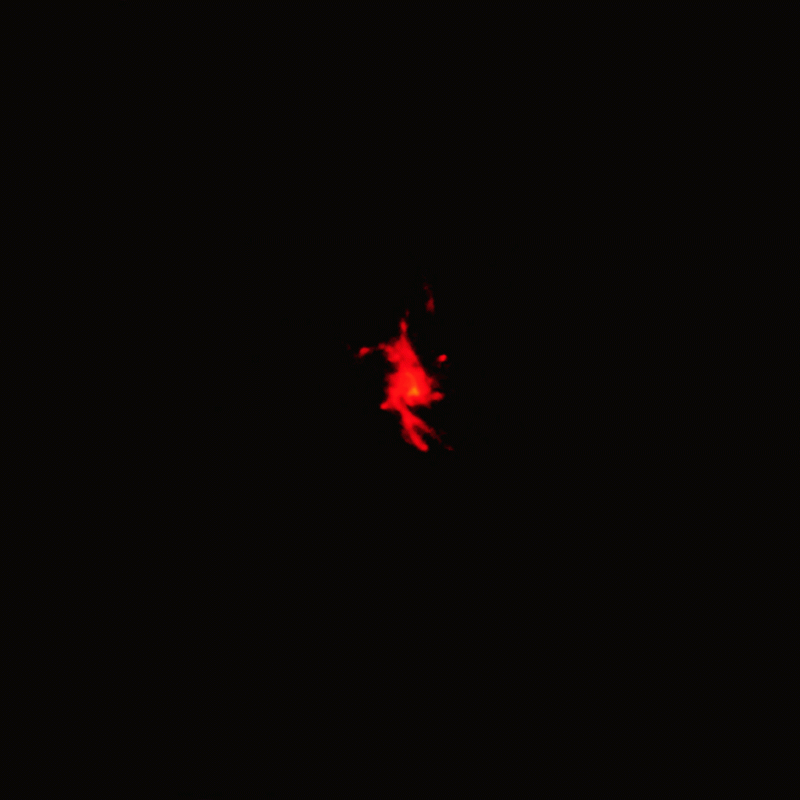
Galaxy clusters are some of the largest structures in the universe. Held together by gravity, they contain a collection of individual galaxies, hot gas, and dark matter. In the case of Abell 2597, a giant central supermassive black hole within one of these galaxies is recycling gas, pulling it in and shooting it back out again. This image is a composite of X-rays from Chandra (blue), optical data from the Digitized Sky Survey (orange), and optical light from the Las Campanas Observatory in Chile (red).
NGC 4490
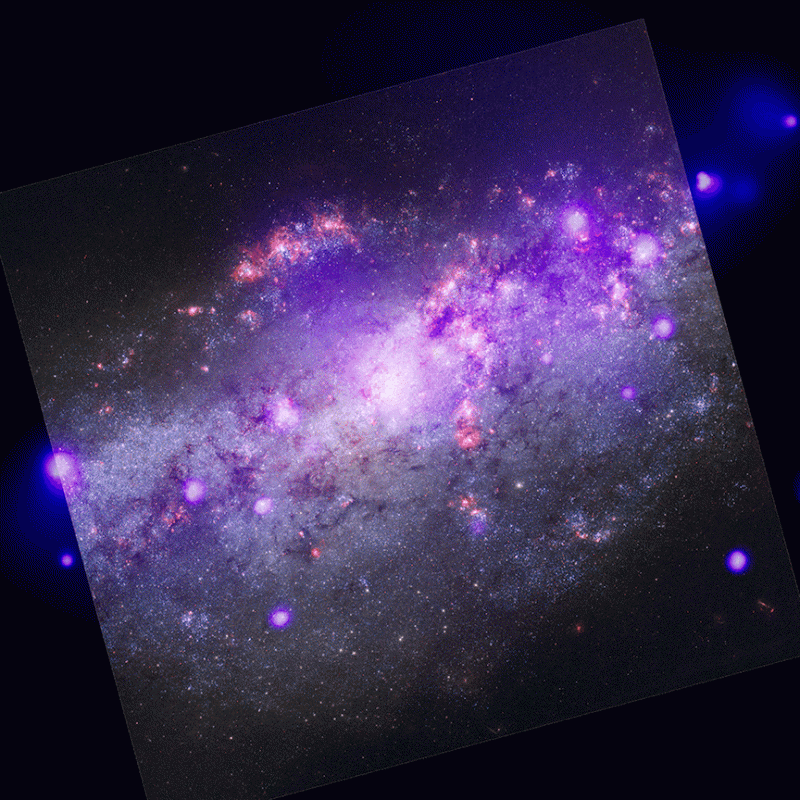
Two galaxies colliding may seem like a chaotic environment, but it can have some benefits — like birthing new stars. That’s what happening in the case of NGC 4490 and a smaller galaxy (not visible). This pair is one of the mostly closely interacting systems, but researchers actually think the two galaxies are now starting to move away from one another. Pointlike X-ray sources (purple), likely neutron stars and stellar-mass black holes, appear in data from Chandra, which is combined here with optical data (red, green, blue) from Hubble.
Source: astronomy.com